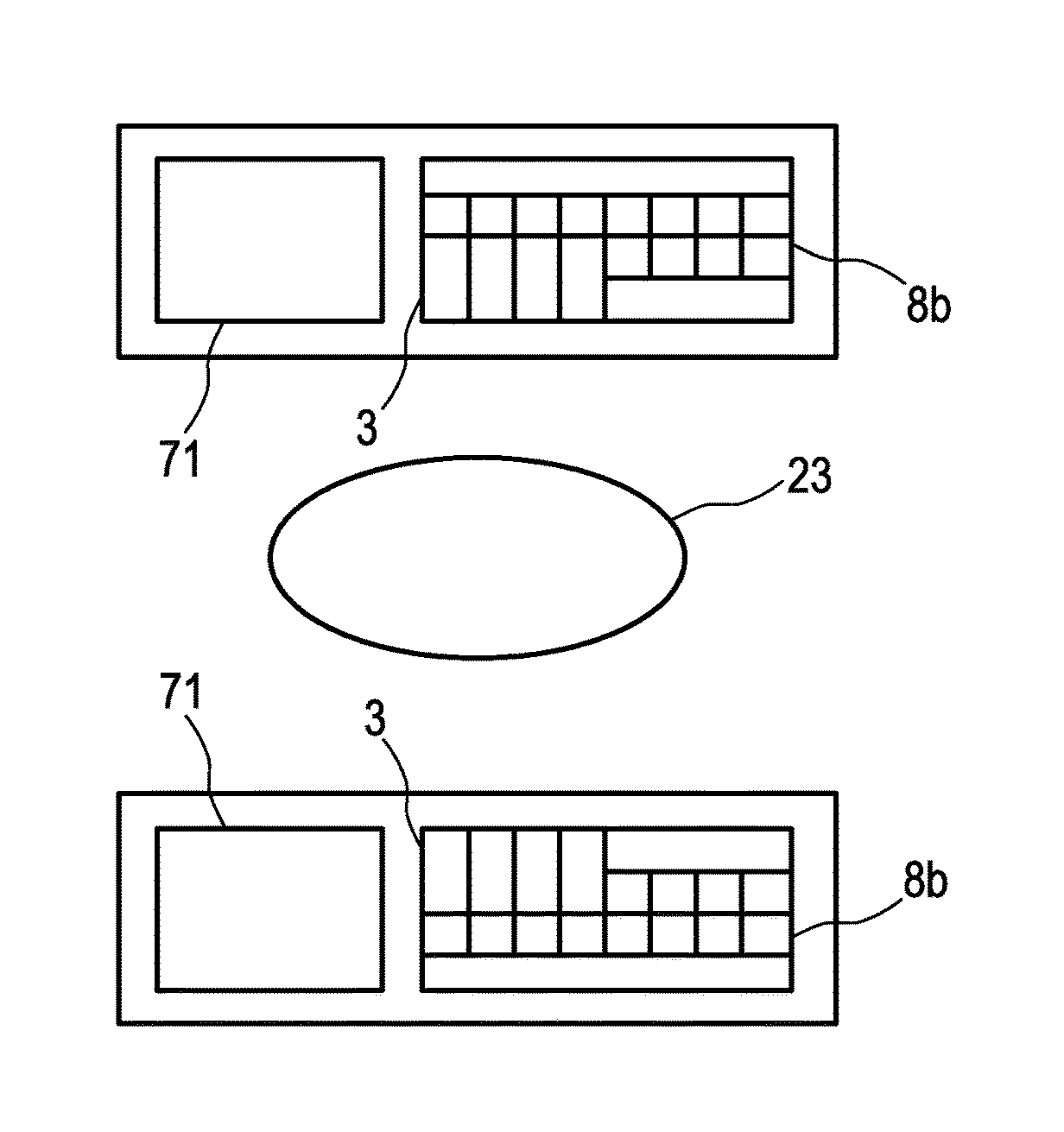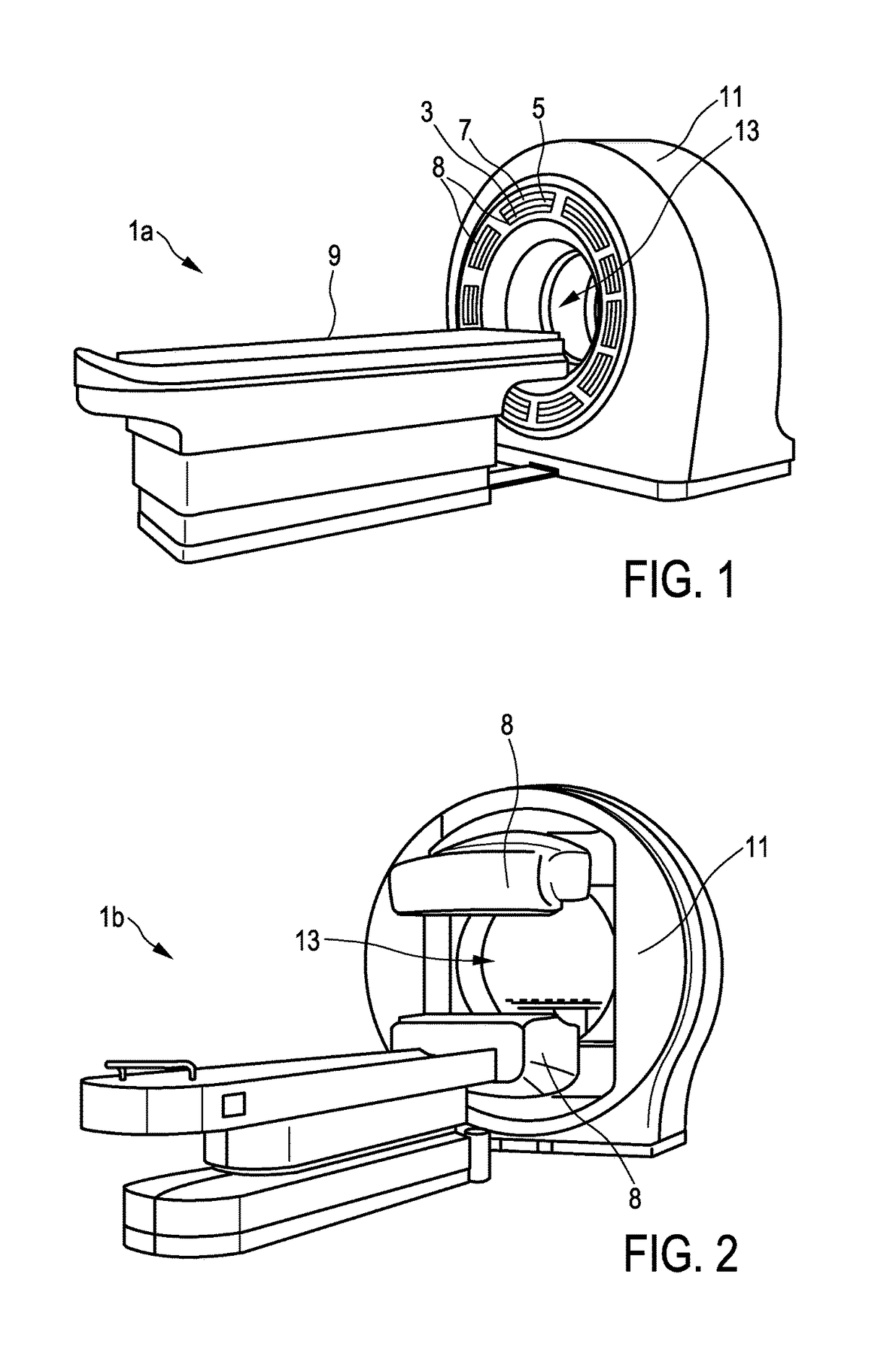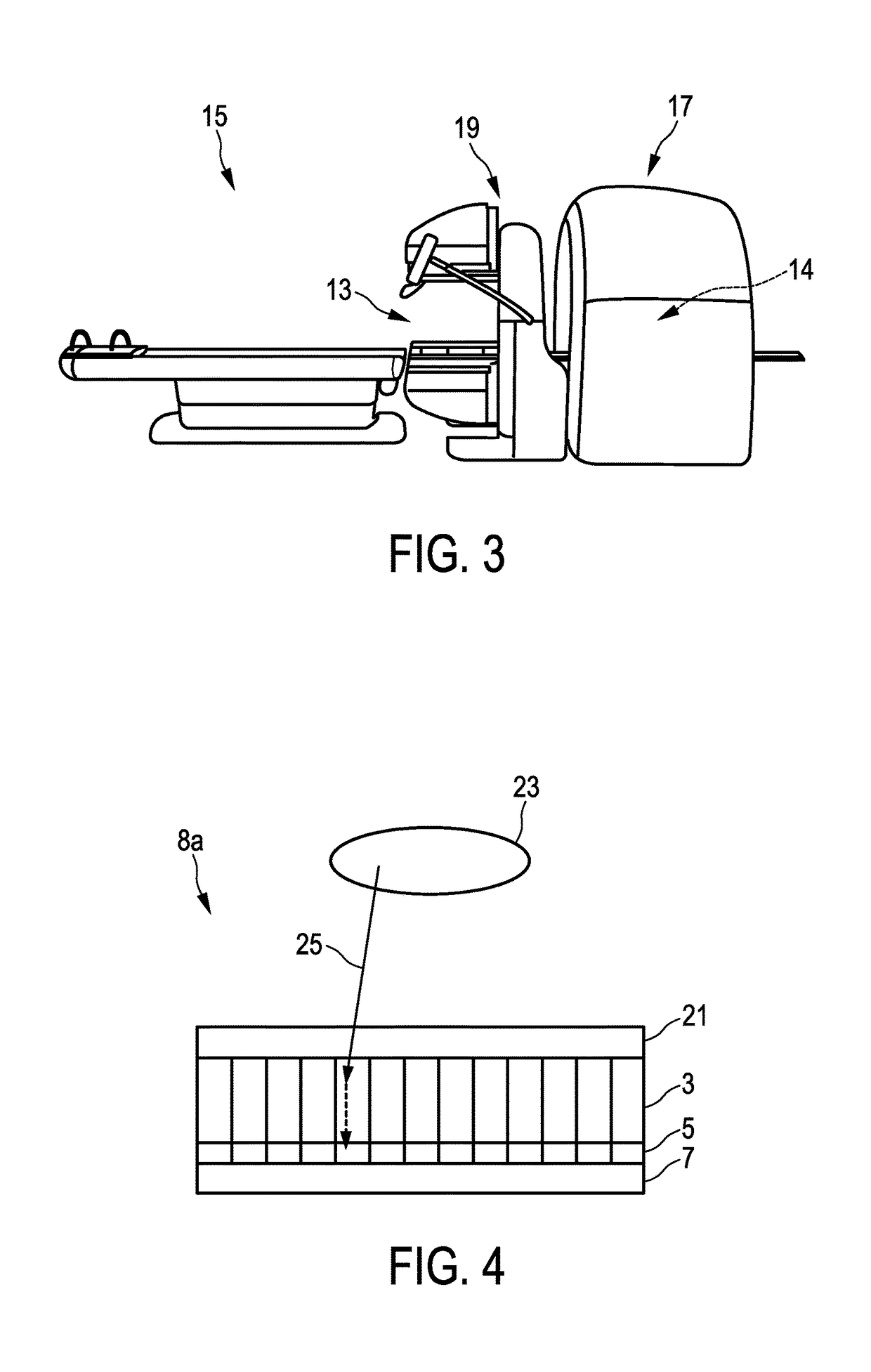Multimodal imaging apparatus
a multi-modal imaging and apparatus technology, applied in tomography, x/gamma/cosmic radiation measurement, instruments, etc., can solve the problems of difficult upgradability, less possible savings, and complicated supply chain of different imaging systems, so as to reduce the amount of electronics, save costs, and achieve high light output
- Summary
- Abstract
- Description
- Claims
- Application Information
AI Technical Summary
Benefits of technology
Problems solved by technology
Method used
Image
Examples
Embodiment Construction
[0052]In FIG. 1 there is illustrated a first embodiment of a multimodal imaging apparatus 1a according to the present invention. The apparatus 1a comprises a scintillator 3 for capturing incident gamma quanta generated by a radiotracer and for emitting scintillation photons in response to captured gamma quanta and a photodetector 5 for capturing the emitted scintillation photons and for determining a spatial distribution of the scintillation photons (e.g. a charge distribution). The apparatus further comprises a readout electronics 7 for determining the impact position of an incident gamma quantum in the scintillator 3 based on the spatial distribution of the scintillation photons. A combination of scintillator 3, photodetector 5, and at least part of the readout electronics 7 may also be referred to as detection module 8. As illustrated in FIG. 1 the multimodal imaging apparatus 1a comprises multiple detection modules 8 attached to a common gantry 11. The number of detection module...
PUM
 Login to View More
Login to View More Abstract
Description
Claims
Application Information
 Login to View More
Login to View More - R&D
- Intellectual Property
- Life Sciences
- Materials
- Tech Scout
- Unparalleled Data Quality
- Higher Quality Content
- 60% Fewer Hallucinations
Browse by: Latest US Patents, China's latest patents, Technical Efficacy Thesaurus, Application Domain, Technology Topic, Popular Technical Reports.
© 2025 PatSnap. All rights reserved.Legal|Privacy policy|Modern Slavery Act Transparency Statement|Sitemap|About US| Contact US: help@patsnap.com



